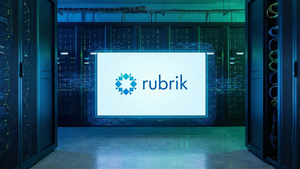Cyfronet’s new Helios supercomputer will advance AI-driven scientific research in astronomy, medicine, and climate protection with higher performance and greater energy efficiency
Hewlett Packard Enterprise (NYSE: HPE) today announced that it built a new supercomputer for the Academic Computer Centre Cyfronet of the AGH University of Krakow, making it Poland’s fastest system1. The new system, called Helios, is Cyfronet’s fifth-generation supercomputer and will be used to advance AI-driven scientific research and innovative commercial applications.
The Helios system is based on the HPE Cray EX supercomputer and features three partitions: the first dedicated to traditional computational scientific research; the second purpose-built with NVIDIA GPUs to support AI applications and AI-driven research; and the third to support interactive workloads that involve big data processing. The supercomputer delivers a theoretical peak performance of 35 petaflops, which is over four times faster than Cyfronet’s previous flagship system. Helios will also provide 1.8 exaflops of peak AI performance, enabling researchers to tap into the power of AI and drive scientific innovation through unprecedented computing capabilities.
With the significant upgrade to performance and engineering offered by the supercomputer, Cyfronet can now support growing demands for compute resources to advance scientific missions across chemistry, medicine, materials technology, astronomy, and environmental protection. The system will provide access to research communities across Poland’s public and private organizations, which include research institutes, municipalities, and hospitals.
As energy costs are skyrocketing, Cyfronet needed Helios to be more energy-efficient than its previous systems. The HPE Cray EX supercomputer meets these demands with liquid-cooling capabilities. Today, HPE delivers the majority of the world’s top 10 most energy-efficient supercomputers2 using direct liquid cooling (DLC), which is featured in the supercomputing solution for generative AI to efficiently cool systems while lowering energy consumption for compute-intensive applications.
“Supercomputers have become the go-to platform for AI to efficiently support model training at scale,” said Trish Damkroger, senior vice president and general manager, HPC & AI Infrastructure Solutions at HPE. “With the new Helios system, an HPE Cray EX supercomputer, the Academic Computer Centre Cyfronet is gaining a significant increase in parallel processing computing power and purpose-built end-to-end capabilities to fuel large-scale research for its users. We are excited to support Cyfronet on its mission and look forward to future advancements its research community will make in a range of scientific fields.”
“For the past 50 years, Cyfronet has been helping advance Polish science, offering its computing capabilities to multiple researchers and institutions so they can achieve more complex and accurate results in a shorter time,” said Prof. Kazimierz Wiatr, Director of ACC Cyfronet AGH. “To keep doing that, we needed to invest and build the new supercomputer with the most advanced architecture, high compute power, and AI capabilities. The HPE Cray EX supercomputer, used in the world’s fastest clusters, was the right choice.”
Helios consists of three partitions targeted for different types of workloads, serving both scientific communities and commercial customers:
- HPE Cray Supercomputing EX with CPU partition, equipped with 75,264 "Zen 4" cores from 4th Gen AMD EPYC™ processors and 200 terabytes of DDR5 memory. This partition is targeted at modeling and simulation workloads, such as computational fluid dynamics used for wind turbines and propellers, car crash simulation tests, and medicine, such as beam simulations in proton therapy used in cancer treatment, among others.
- HPE Cray Supercomputing EX with GPU partition, equipped with 440 NVIDIA GH200 Grace Hopper Superchips, is targeted for image-intensive computer simulations in materials engineering, solid state physics, drug discovery, and large-scale AI training, such as generative AI.
- HPE Cray Supercomputing XD665 with “INT” partition, targeted for interactive work with big data, tuning AI models, and running applications that use AI for inference, is equipped with 24 NVIDIA H100 Tensor Core GPUs and high-speed NVMe local storage.
All components of the supercomputer are interconnected with HPE Slingshot, which provides 200 gigabits per second (Gbps) of purpose-built, high-performance networking to address demands for higher speed and congestion control for data-intensive workloads. Based on HPE Cray technology, this tuneable interconnection supercharges performance for the entire system by enabling extremely high-speed networking. Helios also has a total of 17.5 petabytes of Lustre file system storage built on the HPE Cray ClusterStor E1000 Storage System.
About Hewlett Packard Enterprise
Hewlett Packard Enterprise (NYSE: HPE) is the global edge-to-cloud company that helps organizations accelerate outcomes by unlocking value from all of their data, everywhere. Built on decades of reimagining the future and innovating to advance the way people live and work, HPE delivers unique, open, and intelligent technology solutions as a service. With offerings spanning Cloud Services, Compute, High Performance Computing & AI, Intelligent Edge, Software, and Storage, HPE provides a consistent experience across all clouds and edges, helping customers develop new business models, engage in new ways, and increase operational performance. For more information, visit: www.hpe.com
About Academic Computer Centre Cyfronet AGH
ACC Cyfronet AGH was established in 1973 to operate and expand High-Performance Computers and the Krakow Metropolitan Area Network (MAN). Cyfronet is the leader of the PLGrid Consortium, consolidating national computing resources for science and providing many unique IT support services, as well as the leader of the Polish National Competence Centre in HPC, which serves as a contact and access point for both academia and industry. Cyfronet has unique experience in building, maintaining and developing integrated service platforms for scientific users. Based on the hosted infrastructure and gained expertise, Cyfronet participates in developing many Polish and European R&D initiatives, including EGI, EOSC, EPOS, EuroHPC, LUMI, LUMI-Q, Digital Twins in Earth- and Health Sciences. For more information, visit: www.cyfronet.pl/en
_____________________________________
1 The new system currently delivers a theoretical peak performance of 35 petaflops, making it the fastest supercomputer in Poland compared to the systems featured in the TOP500 list (November 2023 edition).
2 Green500 list - November 2023: https://www.top500.org/lists/green500/list/2023/11.
View source version on businesswire.com: https://www.businesswire.com/news/home/20240424263546/en/
Contacts
Szymon Solnica
szymon.solnica@hpe.com





